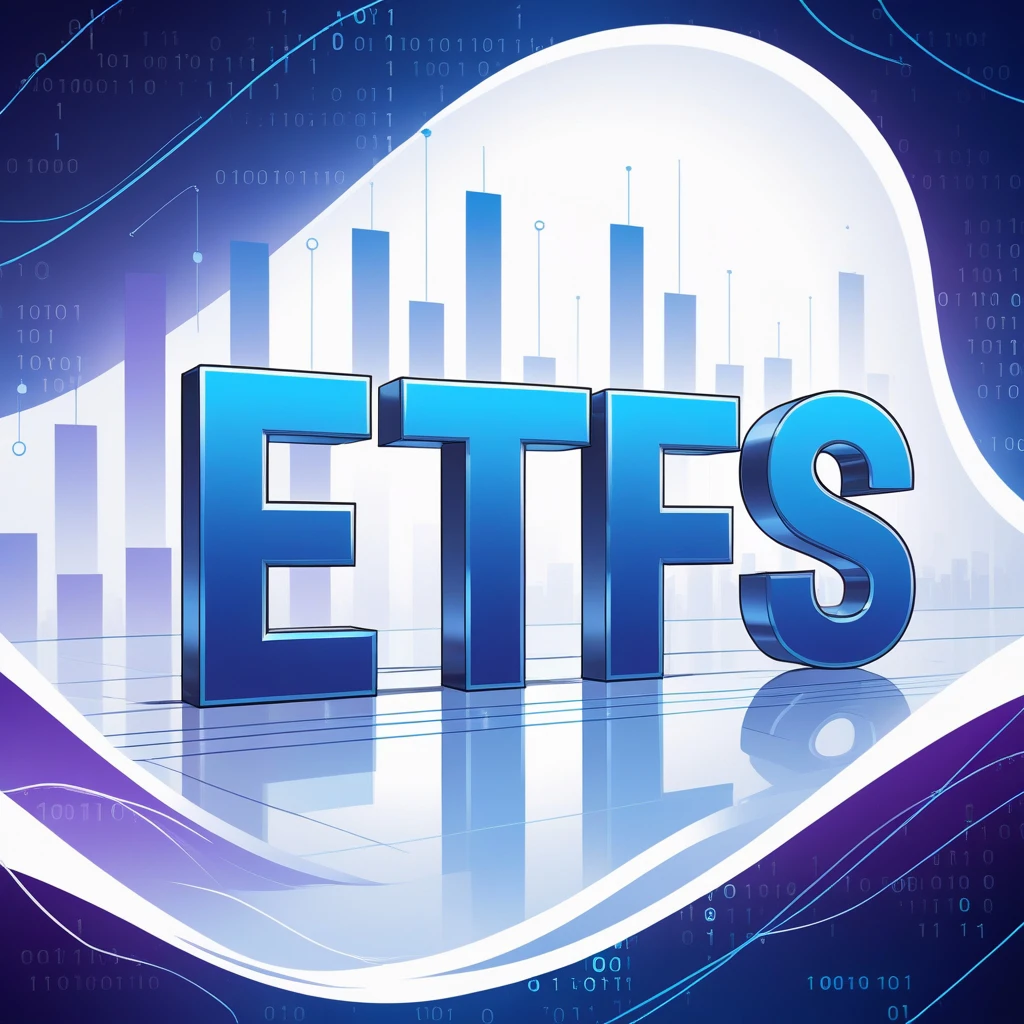ETFs Explained for Beginners: What’s All the Fuss About?
Have you ever wondered how you can invest in a range of stocks without needing to shell out a ton of cash? Or maybe you’ve heard the buzz about ETFs and are curious about what they are. Look no further! Exchange-Traded Funds, or ETFs as they are commonly known, have become a buzzword in the investing world, and for a good reason. Imagine having the diversity of a mutual fund but with the flexibility of trading like a single stock. That’s just the tip of the iceberg when it comes to ETFs. They offer a world of possibilities for both seasoned investors and complete beginners alike. Their growing popularity and accessibility make ETFs an essential topic for anyone looking to dive into the investment landscape.
What Are ETFs?

ETFs, short for Exchange-Traded Funds, are investment funds traded on stock exchanges, much like stocks. An ETF holds assets like stocks, commodities, or bonds, and generally operates with an arbitrage mechanism designed to keep trading close to its net asset value. Most ETFs track an index, such as the S&P 500 or a sector like technology or healthcare.
| Feature | Description | Benefit to Investors |
|---|---|---|
| Diversification | ETFs can hold a variety of assets | Reduces risk |
| Liquidity | Traded on stock exchanges | Allows easy buying and selling |
| Cost Efficiency | Lower expenses compared to mutual funds | Increases net returns |
| Transparency | Regular disclosures of holdings | Better investor decisions |
ETFs provide an excellent way for investors to diversify their portfolios without having to purchase each stock individually. They offer liquidity, meaning you can buy and sell them with ease, and the costs are generally lower than traditional mutual funds. Sounds great, right?
How Do ETFs Work?
Let’s break down how ETFs work for the average Joe. Essentially, when you buy an ETF, you’re buying a share of a basket of different assets. This could be stocks that mirror an index or a collection of bonds. The price of an ETF shares moves up and down throughout the day as it is bought and sold, similar to stocks on the stock market.
Unlike mutual funds, ETFs don’t need you to pay a minimum initial investment, making them more accessible to everyday investors. This flexibility allows you to start on the stock market and diversify your investments without needing a small fortune.
The Appeal of ETFs: Why Everyone’s Talking About Them

ETFs are not just about convenience; they signify a shift towards more strategic and individualized investing.
ETFs have captured the imagination of investors for several reasons. First off, transparency is a massive draw. Investors can see exactly what the fund holds on a daily basis. This transparency allows investors to make informed choices, aligning their investments with their personal ethical or financial goals. Moreover, the flexibility to trade ETFs any time during market hours provides an edge over mutual funds, which only trade after the market shuts down.
Performance tracking is another big advantage. The majority of ETFs are designed to track indices. This means that they consistently aim to match the performance of a market or sector index, removing the guesswork and alleviating concerns about manager fees and performances impacting their returns.
Types of ETFs to Know About
ETFs aren’t a one-size-fits-all product. They come in a variety of types, each with its own specific focus. Let’s take a look at some common types:
1- Equity ETFs: These aim to track a specific index, like the S&P 500, giving exposure to a broad range of stocks.
2- Bond ETFs: These hold a collection of bonds and are generally thought to be safer, especially in volatile markets.
3- Industry/Sector ETFs: Focusing on a specific industry, such as technology or healthcare, allows an investor to bet on an entire sector.
4- Commodity ETFs: Perfect for those interested in investing in physical goods like gold or oil without having to run a risk of storing these commodities.
Choosing the right type of ETF will depend on what your investment goals are and the kind of exposure you’re looking for in different market sectors or asset classes.
Risks Involved with ETFs
No investment comes without risks, and ETFs are no exception. Even though they offer diversification, which can reduce risk, they still come with their own unique sets of uncertainties. Like any other stock purchase, an ETF can go down in value, and sometimes, this could be quicker than anticipated. Market risks are inherent, and specific sector ETFs can be particularly vulnerable if the sector underperforms.
Other things to watch out for include tracking error, where an ETF doesn’t perfectly replicate the index it purports to track. Additionally, in thinly-traded ETFs or less liquid markets, there might be larger spreads between the buy and sell prices, affecting how easily you can exit a position.
How to Get Started with ETF Investing

Beginning your journey with ETFs doesn’t need to be daunting. Start by defining your investment goals. Do you want to save for a specific future need, or are you looking to grow your wealth more generally? Once your goals are set, familiarize yourself with the different types of ETFs and what they track.
You can open a brokerage account, offering platforms specifically designed for beginning investors. They often provide resources and tools to help you learn the ropes and manage your portfolio effectively during your investment journey.
ETF Strategies for Beginners
As a beginner, sticking with a few straightforward strategies can offer a good starting point. Consider dollar-cost averaging, where you invest a fixed amount regularly, regardless of the ETF’s price. This strategy lowers the risk of picking the wrong moment to invest your full capital and decreases the fear of volatility.
Another strategy involves long-term holding. Given the way ETFs are designed and their ability to mirror index performances, they can be valuable tools for those interested in a “buy and hold” strategy aiming for steady wealth accumulation.
FAQ – Commun Doubts
Do ETFs pay dividends?
Yes, if the stocks or bonds within an ETF pay dividends or interest, those are typically passed along to ETF holders.
How do I buy ETFs?
ETFs can be purchased through any brokerage account, similar to how you’d buy shares of a company.
Are ETFs good for beginners?
Absolutely. They offer diversification, generally lower costs, and require no minimum investment amount.
What are the tax implications of owning ETFs?
ETFs are tax-efficient. Because of their structure, they usually have lower capital gains taxes compared to mutual funds.
Can I sell my ETFs anytime?
Yes, ETFs trade like stocks, which means you can buy or sell them at any point during market hours.
Conclusion
ETFs have truly revolutionized the way people think about investing by blending stock-like features with the advantages of mutual funds. They provide an efficient and cost-effective means to diversify, leverage market trends, and align with various investment strategies. Whether you’re seeking to dip your toes in the market waters or are an experienced investor looking for new opportunities, ETFs offer something for everyone. With information readily accessible and diversified portfolios available at the click of a button, there’s never been a better time to explore ETFs and what they can do for your financial future.


